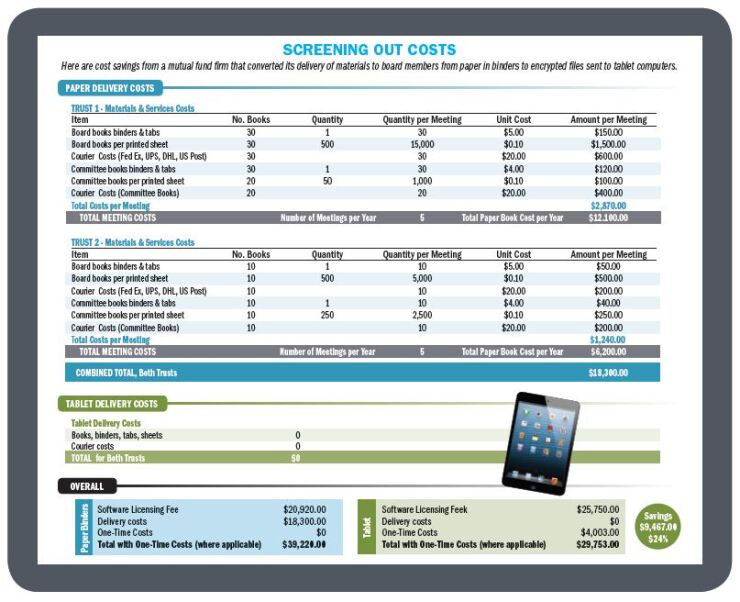
A year ago, Ira Cohen would await the delivery a week or so ahead of time of a 1,000-page binder of agenda items and background to prepare for board meetings of the
The binder would be four- or five-inches thick. "Monstrous,'' Cohen recalls.
He would fill it with additional paper: Stickies on items he had questions or comments about. He'd draw pictures in it, where helpful. Then, he'd lug it onto an airplane. Participate in the meeting.
Then leave the book there. Before repeating, for the next board meeting.
Now, it's all delivered by an encrypted file, to an Apple iPad that he purchased for the purpose. The non-techie's first concern?
"Where am I going to put my sticky notes?'' he recalls. "Once I put all my stickies on the page, I won't be able to see the screen."
Hardly. His trust company, a customer of
Post-it notes can be placed electronically, on any page. Not the screen. A finger or a stylus can be used to give instructions or annotate what's seen. Now, Cohen doesn't have to lug a book from Sugar Land, Texas, to Indianapolis, Indiana, to be ready for a board meeting. He just slips the iPad into his briefcase. And knows, if there are any updates on the way, he'll just have to download a final version on landing. No stray addendum pages.
Roughly 2,500 boards and 52,000 individual directors, executives and administrators use the application, worldwide. Driving the movement is cost, according to John Lively, counsel to the Valued Advisers Trust.
"It makes things cheaper. It's as simple as that,'' he said. "It's also more efficient to get things done.''
Board members all can call up the same page. Board meetings can go faster, because, quite literally, everyone is on the same page. There are no lost pages or ink smudges. And there can be links to additional reference material, on the Internet.
The savings come largely from the elimination of production and delivery costs. No paper to produce means no binder to ship.
But time also gets saved. Not having to go through a printer or an overnight service probably saves a couple days in the development and delivery process, according to Jeff Young, Senior Vice President, Relationship Management at Huntington Asset Services.
The chart that follows shows the breakdown of print versus pixel costs, at one representative two-trust fund firm. Overall, the switch brings a savings of $9,467 a year on original costs of $39,220, or 24%, in this example.





